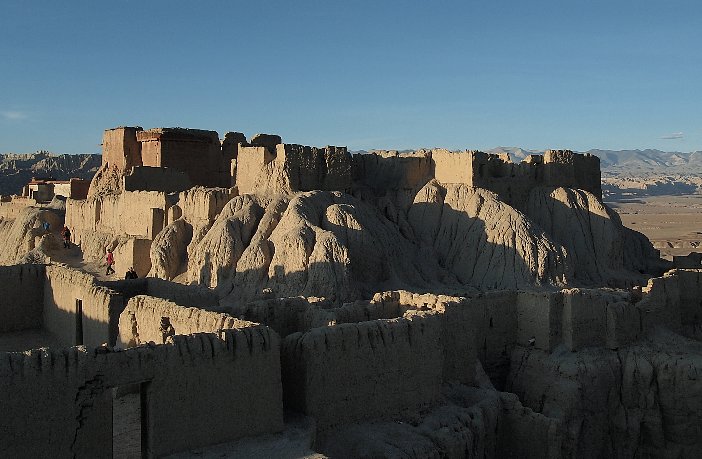Ruins Of The Mysterious Kingdom Of Guge That Suddenly Vanished Overnight
A. Sutherland - AncientPages.com - More than 1,000 years ago, the mysterious great Buddhist Kingdom of Guge, with its capital, Tsaparang, was located on the high Tibetan plateau.
Almost legendary Kingdom was situated in the western part of the Tibetan province of Ngari, about 1200 miles west of Lhasa, close to Mount Kailash, and near the border with India.
Tsaparang, the ruins of the ancient capital of Guge. source
"Ngari" means 'Top of the Roof of the World'. The region in the vicinity of the legendary Guge kingdom is mainly covered with desert and fantastic clay forests extending several hundred square kilometers. Their shape variety is unique. There, in Zhada County, lived a splendid civilization through the centuries.
Almost never-ending strange clay forests surround the county's town and the ruins of Guge. These peculiar forests are formed due to erosion and are composed of clay and sandstone.
Today there are only inaccessible and yet fascinating ruins that cover an area of 720,000 square meters and lie 3800 meters (12400 feet) above sea level!
The mysterious Buddhist Kingdom of Guge - founded in the 10th century by the descendant of the last Emperor of Tibet - is mentioned in ancient Tibetan myths and the famous legend of the lost valley of Shangri-La.
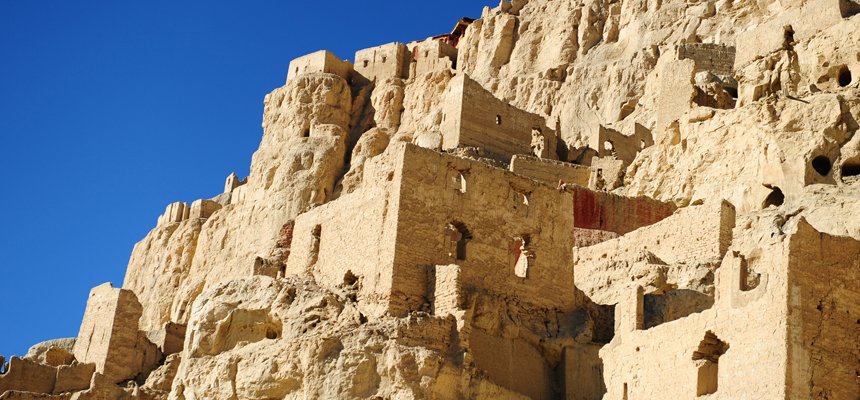 The extensive Guge kingdom ruins - Image credit: Places of Interest in Tibet
The extensive Guge kingdom ruins - Image credit: Places of Interest in Tibet
In western Nepal's remotest part of Tibet, there is the most sacred place for Hindus and Buddhists: the holy mountain, Kailash, around which legends have gathered for centuries, perhaps millennia.
'...across the high plateau of Tibet... there are inaccessible ruins of the mysterious medieval Buddhist kingdom of Guge, the lost realm of the west which may be the model behind one of the most ancient Tibetan myths, and ultimately, of the famous legend of the lost valley of Shangri-La...' (M. Wood, In Search of Myths & Heroes: Exploring Four Epic Legends of the World).
What is so mysterious about the Guge Kingdom? Probably, the mystery of Guge is connected to its sudden disappearance.
The Kingdom survived for approximately 700 years before it mysteriously disappeared.
The history of Tibet is complex, and "although a unified Tibet was not to last, the establishment of a priestly caste with equal status to that of the aristocracy remained.
The Kingdom of Guge was established in the west, while the Kingdom of Tsang grew up around Shigatse. In central Tibet, a new religious sect emerged in the 15th century.
The reforming Gelukpas, the 'Order of the Model of Virtue' – known colloquially as the 'Yellow Hats,' became increasingly powerful with Mongol support and, in the 17th century, were strong enough to challenge the long-established 'Red Hat' sect of the Kagyupas who had the support of the King of Tsang.
Gelukpa's victory in the bitter conflict with the Kagyupas was far from certain until they sought help from Gushri Khan, the Mongol leader." (Harrison P., Dennis P., Fortress Monasteries of the Himalayas).
Image credit: yuen yan - https://www.flickr.com/photos/yuenchiyan/6122716691/ - CC BY-SA 2.0
For many decades, the ruins of the Guge Kingdom have attracted numerous tourists, archeologists, photographers, and explorers from around the world.
People are not only interested in the culture and art of the Guge Kingdom but also in the mystery of how such a vast kingdom was gone overnight.
Not much is known about what did happen to this glorious Tibetan culture and the more than ten thousand inhabitants of Guge. No descendants survived; with them, much of the Kingdom's history was also lost.
However, several significant Buddhist doctrines had their roots in the Tibetan Kingdom of Guge. There are also murals, tunnels, secret paths, caves, and ancient walls covered with inscriptions and sculptures from the past, and this legacy tells about the Guge Kingdom.
Ruins of the Guge capital at Tsaparang of Guge. Image credit: squallgold - CC BY-SA 4.0
All that is left from the glorious time are the ruins, but even today, the Kingdom's glorious past is still visible. The ruins extend around the sides of a mountain, probably more than 300 m. (984 ft.) high. More than 400 rooms, some fortresses, pagodas, and 800 caves have been located among the Guge's ruins.
There is a rich diversity of old burial places.
According to the ancient Tibetan historical records and the Annals of Kings and Officials in Tibet, Guge had a total of 16 kings who ruled the Kingdom and had their royal, more than 300 meters high, palace - resting on the citadel. But the only way to reach the king's ancient seat was through a labyrinth of passages.
The palace was built in many stages over a long time between the 10th and 16th centuries. In the seventeenth century, a critical period in the history of Tibet came, and the Kingdom finally collapsed.
Written by – A. Sutherland AncientPages.com Staff Writer
Updated on December 11, 2022
Copyright © AncientPages.com All rights reserved. This material may not be published, broadcast, rewritten or redistributed in whole or part without the express written permission of AncientPages.com
Expand for references
More From Ancient Pages
-
 Is This The Face Of Queen Nefertiti? 3-D Facial Reconstruction Of Egyptian Queen Sparks Controversy
Archaeology | Feb 12, 2018
Is This The Face Of Queen Nefertiti? 3-D Facial Reconstruction Of Egyptian Queen Sparks Controversy
Archaeology | Feb 12, 2018 -
 New DNA Study Reveals How The Black Rat Colonized Europe In The Roman And Medieval Periods
Archaeology | May 6, 2022
New DNA Study Reveals How The Black Rat Colonized Europe In The Roman And Medieval Periods
Archaeology | May 6, 2022 -
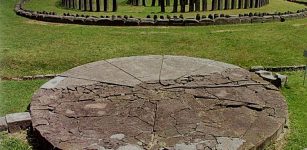 Sarmizegetusa And Its Andesite Sun Artifact Similar To The Mayan Calendar
Artifacts | Apr 13, 2021
Sarmizegetusa And Its Andesite Sun Artifact Similar To The Mayan Calendar
Artifacts | Apr 13, 2021 -
 Ancient Volcanic Eruption Was Not A Catalyst To Early Homo Sapiens Cultural Innovations – Study finds
Archaeology | Jul 8, 2024
Ancient Volcanic Eruption Was Not A Catalyst To Early Homo Sapiens Cultural Innovations – Study finds
Archaeology | Jul 8, 2024 -
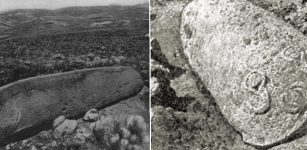 Mysterious 2000-Year-Old Carved Vishap Stone Monuments Of Armenia
Featured Stories | Dec 13, 2016
Mysterious 2000-Year-Old Carved Vishap Stone Monuments Of Armenia
Featured Stories | Dec 13, 2016 -
 What Is The Avoidance Custom Of The Amish People In Pennsylvania?
Ancient History Facts | Jul 29, 2019
What Is The Avoidance Custom Of The Amish People In Pennsylvania?
Ancient History Facts | Jul 29, 2019 -
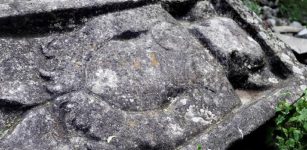 Pre-Hispanic Carved Stone Monuments Discovered On A Mountaintop In Puebla, Mexico
Archaeology | Jul 25, 2020
Pre-Hispanic Carved Stone Monuments Discovered On A Mountaintop In Puebla, Mexico
Archaeology | Jul 25, 2020 -
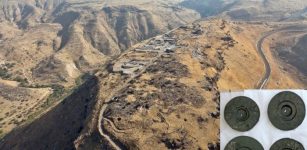 Ancient City Of Hippos-Sussita And The Mysterious Disc-Shaped Copper Plates
Archaeology | Apr 18, 2017
Ancient City Of Hippos-Sussita And The Mysterious Disc-Shaped Copper Plates
Archaeology | Apr 18, 2017 -
 Modern Humans Have Their Homeland In Botswana – New Study
Archaeology | Oct 29, 2019
Modern Humans Have Their Homeland In Botswana – New Study
Archaeology | Oct 29, 2019 -
 Bronze Age Finding Offer New Clues On The Beginnings Of Cardiff
Archaeology | Jul 15, 2022
Bronze Age Finding Offer New Clues On The Beginnings Of Cardiff
Archaeology | Jul 15, 2022 -
 More Anglo-Saxon Burials And Artifacts Found In Lincolnshire, UK
Archaeology | Jan 11, 2024
More Anglo-Saxon Burials And Artifacts Found In Lincolnshire, UK
Archaeology | Jan 11, 2024 -
 Surprising Evidence Of Prehistoric Human Activity In Falkland Islands – Europeans Were Not The First Settlers
Archaeology | Oct 29, 2021
Surprising Evidence Of Prehistoric Human Activity In Falkland Islands – Europeans Were Not The First Settlers
Archaeology | Oct 29, 2021 -
 Mysterious Bronze Age Viksö Helmets With Horns Related To Myths, Holy Animals And Divine Power
Artifacts | Feb 27, 2018
Mysterious Bronze Age Viksö Helmets With Horns Related To Myths, Holy Animals And Divine Power
Artifacts | Feb 27, 2018 -
 Vatican Secrets – Extraterrestrial Life And Genetically Engineering Of Humans By Advanced Alien Species
Featured Stories | Oct 6, 2018
Vatican Secrets – Extraterrestrial Life And Genetically Engineering Of Humans By Advanced Alien Species
Featured Stories | Oct 6, 2018 -
 Who Was The Mysterious Spitalfields Roman Noblewoman Dressed In Silk Found In A Sarcophagus In London?
Archaeology | Dec 21, 2020
Who Was The Mysterious Spitalfields Roman Noblewoman Dressed In Silk Found In A Sarcophagus In London?
Archaeology | Dec 21, 2020 -
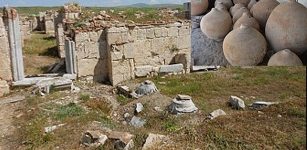 Byzantine Granary With 11 Pithoi Found In Byzantine City Of Amorium In Central Turkey
Archaeology | Aug 5, 2020
Byzantine Granary With 11 Pithoi Found In Byzantine City Of Amorium In Central Turkey
Archaeology | Aug 5, 2020 -
 Ancient Graves That Date Back To Pre-Vijaya Era Discovered In Sri Lanka
Archaeology | Oct 21, 2015
Ancient Graves That Date Back To Pre-Vijaya Era Discovered In Sri Lanka
Archaeology | Oct 21, 2015 -
 Enigmatic Newport Tower – Built By The Vikings, Knights Templar, Freemasons Or Someone Else?
Featured Stories | Aug 1, 2024
Enigmatic Newport Tower – Built By The Vikings, Knights Templar, Freemasons Or Someone Else?
Featured Stories | Aug 1, 2024 -
 25 Stone Age Caves And Rock Carvings Found In Odisha, India
Archaeology | Mar 30, 2017
25 Stone Age Caves And Rock Carvings Found In Odisha, India
Archaeology | Mar 30, 2017 -
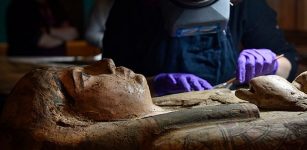 Never-Before-Seen 3,000-Year-Old Paintings Of Egyptian Goddess Amentet Discovered Inside Coffin Of A Mummy
News | Apr 7, 2020
Never-Before-Seen 3,000-Year-Old Paintings Of Egyptian Goddess Amentet Discovered Inside Coffin Of A Mummy
News | Apr 7, 2020


